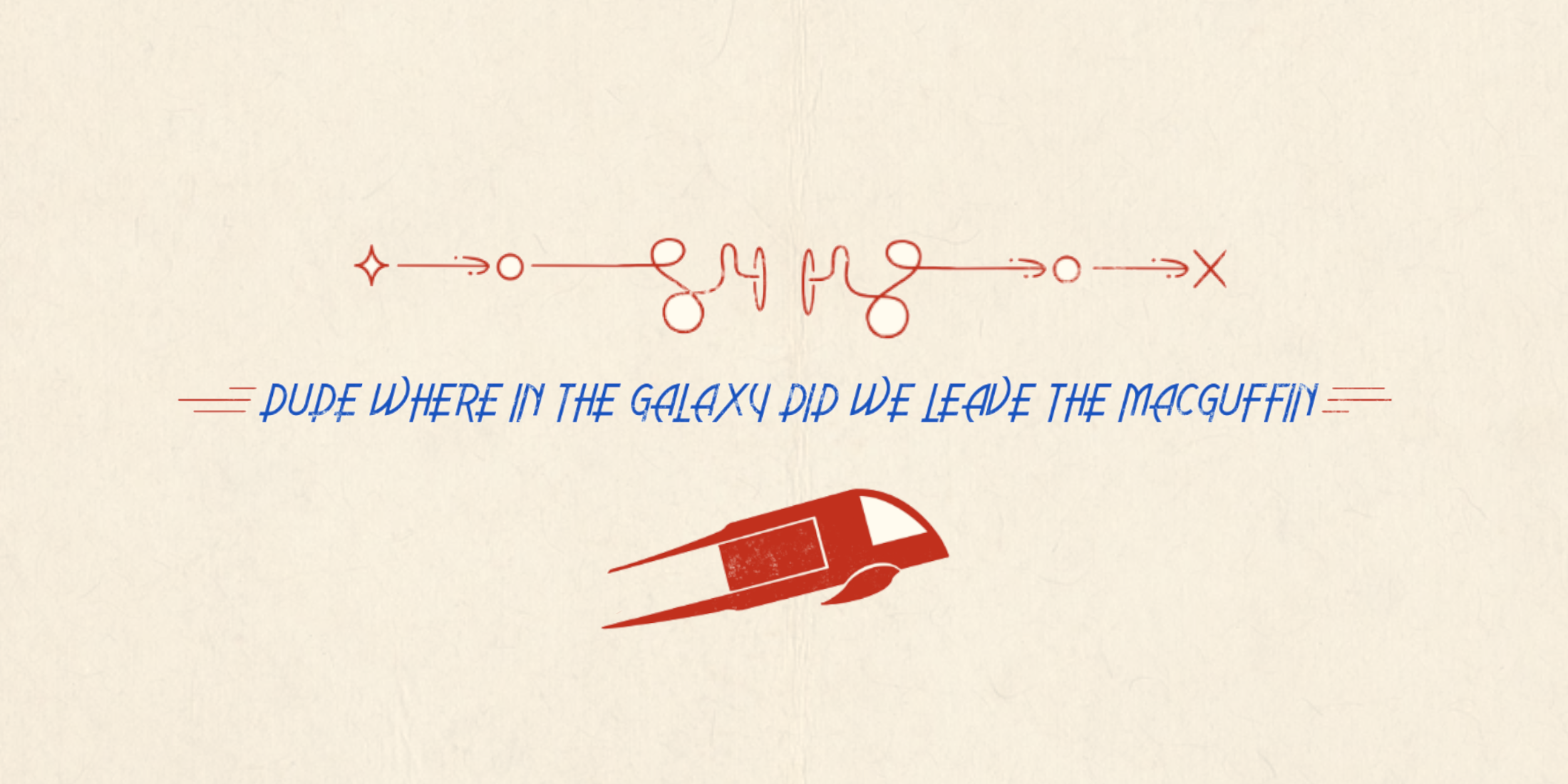It’s hard to understate how surprisingly popular The Hangover was when it first launched in 2009. The tale of three men trying to piece together what they had done the night before worked surprisingly well, elevating the movie above similar raunchy comedies from the era. Ever since I first watched the movie, I’ve been convinced the film’s plot would make for a super fun TTRPG. Thankfully, my (surprisingly specific) request has been granted thanks to Dude Where In The Galaxy Did We Leave The MacGuffin.
Dude Where In The Galaxy Did We Leave The MacGuffin is a sci-fi TTRPG that casts players as members of an intergalactic shipping firm. This firm has been hired to transport a powerful, galaxy-saving MacGuffin to a keep on the other side of the galaxy. Alas, after a heavy night of drinking, the crew wakes up and realizes that not only do they not remember the night before, but the MacGuffin has vanished!
Desperate to avoid punishment, the crew must scramble to find the MacGuffin and work out what happened to them the night before.
Rules That Aren’t Rocket Science

Dude Where In The Galaxy Did We Leave The MacGuffin is a game for three to five players and one GM. Before the game starts, the GM has to come up with three leads, each with three clues. These leads will form the game’s core structure as the players must get each before retrieving the titular MacGuffin.
Players start the game by picking or rolling to get their Alien Race and Skill, each with a unique benefit, before rolling to discover their first lead in the case. Players have two moves to help them navigate this world, Action and Investigation. However, unlike similar games where both moves would use a similar dice system, Dude Where In The Galaxy Did We Leave The MacGuffin handles each one slightly differently.
Action And Investigation Actions
Players roll a D6 and additional D6s for each relevant skill when attempting an Action. They take the highest value from these dice and then compare it to a difficulty value. Matching the difficulty value gives success with a consequence while beating it leads to perfect success. But if the player rolls under the value, terrible things happen.
Investigation checks also involve rolling D6. However, the value rolled affects what questions the player can ask and how truthful the answer they receive is. So, a low roll means the answer will be a mixture of truth and lies. A middling role gives an indirect truthful answer, and a high roll means the player can ask a custom question and get a totally correct answer.
Players must also worry about the Clock, which shows how close the MacGuffin’s delivery deadline is. The Clock goes up when the player critically fails an investigation roll. Alternatively, when making an action roll, the player can cross a section off to automatically make the roll a five. However, if all the Clock sections are crossed off, the players miss the deadline and get fired, leading to a loss.
The players can try to find the MacGuffin when all three leads have been completed. But rather than the GM revealing something they came up with earlier, the players come up with its location themselves, using the clues they’ve gathered as inspiration.
Deliberate Design Leads To Motivated MacGuffin Hunters

While Dude Where In The Galaxy Did We Leave The MacGuffin is simple, it features some extremely clever design details that dramatically elevate the experience and give the game surprising depth. The best example of this is having both actions function differently. While this is a tiny detail, it helps make the game feel much more dynamic and dramatic, helping make the story feel like a big adventure where every action can change the story.
The Investigation action’s resolution system is also a lot of fun. Having the result affect the resulting answer’s truthfulness opens up a lot of fun roleplay moments as players try to separate fact from fiction. This wonderfully fits the game’s tone, as misunderstanding is a core building block in many comedy-adventure and farce movies.
Simple But Immersive Group Storytelling
The MacGuffin finding phase is also a great touch. Having the players come up with the location of the MacGuffin and the reason for their amnesia at the end of the game leads to a fun moment of collaborative storytelling while guaranteeing the ending is thematically satisfying and builds on everything that came before. This is perfect for a comedy game where the story could easily take massive turns between the start and end of the session, rendering any resolution the GM planned beforehand ill-fitting.
The game also has some well-chosen visual elements. Both sides of the page have a fun retro sci-fi aesthetic that draws the eye without becoming visually overwhelming or distracting from the rules. In another nice touch, the game is designed to be printed double-sided, meaning that all of the player-facing rules are on one side, and all the GM information is on the other, making the game feel even more intuitive, making it perfect for “grab and play” situations.
Dude Where In The Galaxy Did We Leave The MacGuffin is a fun party game that shows how deliberate and inventive design can elevate a game and make it more than a simple sum of its parts. While Dude is rule-lite, it never feels lacking during play, sparking plenty of fun roleplay and group storytelling moments. Due to this, Dude is entering my rotation of party and last-minute session games, and I’m sure it will get plenty of use.


